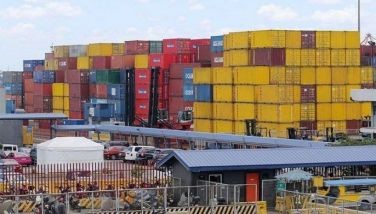International air traffic rises in November
MANILA, Philippines - International scheduled traffic results for November showed an 8.2 percent year-on-year passenger traffic growth and a 5.4 percent increase for freight, the International Air Transport Association (IATA) said.
The passenger load factor for November averaged 75.6 percent while the freight load factor stood at 55.2 percent for the month.
November saw traffic growth slow from the 10 percent increase recorded in the passenger business and the 14.5 percent growth in freight in October. The slowdown in 2010 is partially skewed because of the exceptionally rapid rise in traffic volumes recorded during the fourth quarter of 2009. However, when viewed in absolute terms, air travel fell by 0.8 percent and air freight fell by 1.1 percent between October and November 2010.
IATA said this slower growth does not necessarily signal a negative trend. Even with the decline in November, passenger and freight traffic are still expanding at annualized rates of between five to six percent which is in line with the industry’s historical growth trend.
“The industry is shifting gears in the recovery cycle. Growth is slowing towards normal historical levels in the five to six percent range. Relative weakness in developed markets is being offset by the momentum of economic expansion in developing markets. We see a strong end to 2010 that boosted the year’s profit forecast to $15.1 billion. Slowing traffic growth is in line with our projections for a reduced profit of $9.1 billion in 2011. That’s a 1.5 percent margin. More hard work will be needed in the new year to achieve sustainable levels of profitability,” IATA director general and CEO Giovanni Bisignani said.
In terms of international passenger demand, Asia-Pacific carriers saw their growth slow from 7.3 percent in October to 5.8 percent in November. Capacity expanded relatively in tandem (5.9 percent) for a load factor of 75.6 percent. Despite the region’s strong economic growth and financial performance, November traffic levels were still two percent below pre-recession levels.
Meanwhile, the air freight recovery hit a peak in May 2010. Compared to that peak, volumes have fallen seven percent. The volume of air freight in November was equal to pre-recession levels of early 2008.
November’s year-on-year growth of 5.4 percent is a significant shift from the 14.5 percent recorded in October. This was exaggerated by the exceptionally strong performance in November 2009. In absolute terms, there was a 1.1 percent fall in freight volumes from October to November. All regions, except Africa, showed dramatic drops in year-on-year growth rates from October to November.
November freight carried by Asia-Pacific carriers showed a 4.1 percent year-on-year increase. The region’s carriers moved a similar amount of freight in November that they did at the pre-recession peak of 2008.
“The year-end holiday season has been tough for travelers and for airlines. Exceptionally adverse weather conditions in Europe and the US resulted in travel chaos. Passengers were inconvenienced. Airlines saw lost revenues and saw costs rise. As the backlogs of stranded passengers clear and the situation normalizes, there are two opportunities that must not be lost. The first is to learn and apply lessons from this difficult season so that all stakeholders in the industry’s infrastructure are better prepared for future exceptional situations,” Bisignani said.
“The second opportunity is to evaluate the regulatory world in which aviation operates. In 2010, the Icelandic volcano and the year-end adverse weather made the value of air transport crystal clear. Modern life and the global economy depend on aviation. Whether you are a business person operating in the global market, families keeping in touch across distances or heads-of-state on important foreign missions, aviation is critical. While memories of the travel chaos are still fresh, it’s time to evaluate a long list of government imposed industry handicaps, including excessive taxation, out-dated ownership restrictions, over-regulation where market forces could do better, under-investment in infrastructure and generally poor regulation of monopoly suppliers. We must not let governments forget all of this while waiting for a change of seasons,” he added.
- Latest
- Trending

























